| Company: | Bofors Defence AB |
|---|
| URL: | www.boforsdefence.se | |||
|---|---|---|---|---|
| e-mail: | info@boforsdefence.se | |||
| mc@boforsdefence.se | ||||
| christer.heneback@boforsdefence.se | ||||
| Type of activity: |
| |||
| Contact: | President Magnus Ingesson |
| Address: | SE-691 80 | |
|---|---|---|
| Country: |  SWEDEN SWEDEN | |
| Phone: | +46 586 815 00 | |
| Fax: | +46 586 850 30 |
|
Bofors Defence a leader in many areas of technology Bofors Defence was formed in September 2000 when United Defence procured Bofors Weapon Systems. The company is proud of its heritage and involvement in advanced defence systems and has often been first with new innovations that were ahead of their time. Apart form its present range of products that include mission-assigned system for precision response, protection systems and ammunition and munition launchers Bofors Defence is fully engaged in the development of smart ammunition, to meet the threats of the coming decades.
The need for an armour-killing artillery-launched system Ever since WW I, when the tank and other armoured vehicles first appeared on the battlefield, it has been the main wish of battlefield commanders for an efficient anti-armour artillery launched system. After almost hundred years their wish has become reality through the development of sensor-fuzed munitions (SFM).
There is no doubt, whatsoever, that artillery will still occupy a place in future warfare. But this can only be justified if it continues developing in order to meet the requirements that will be relevant on tomorrow's battlefield and in tomorrow's conflict zones. The demands on increased capability will not only be met by longer ranges and shorter reaction times but also by a higher level of precision and effect in the target with each individual round. At present some armies, for example, France and Sweden have the capability of effectively engaging and destroying enemy tanks, self-propelled artillery and any other armoured vehicle by employing long-range, armour-defeating artillery shells.
Changed situation With the arrival of the 155 BONUS, equipped with sensor-fuzed submunitions it is now possible to defeat the most advanced armour at long range. Artillery can now rapidly engage any enemy armour threat at all ranges out to 35 km when using information from reconnaissance and acquisition systems, such as surveillance and artillery locating radar, UAVs and forward observers. BONUS is made for all kind of combat situations where the destruction of armoured targets is deemed necessary. And because of its high precision and minimal collateral damage it will be a system that can be used to the full in peacekeeping and peace-enforcement operations.
A main contributory factor to BONUS' long-range capability is the base-bleed design that takes full advantage of modern artillery guns when fighting in-depth. The base-bleed device also gives the projectile a shorter time of flight, which can be extremely important as a few seconds can mean the difference between victory or defeat on the modern battlefield.
BONUS can be used in all 39 and 52 caliber guns and is handled and fired as any standard ammunition employing an electronic time fuze. It carries two submunitions, each has a warhead with a multi-channel IR sensor that is not affected by false targets or any other countermeasures. The two submunitions are expelled and stabilised above the target. The aerodynamic design gives each submunition an extremely stable flight and at an altitude of 175 m they start the search phase and as soon as the sensor finds a target an explosively formed penetrator hits it with devastating effect.
Swedish and French co-operation The 155 BONUS is a co-operation project between Sweden and France. At the beginning of the 90s a program was agreed between the French procurement agency, Direction Generale de Armemant (DGA), and the Swedish Defence Materiel Administration (FMV) with the two companies Bofors and GIAT. In 1993 the full-scale development programme that was launched was completed in 1999. This project has been very successful in fully utilising the combined expertise of both countries.
Extensive tests have been carried out during the development in the different environments that are to be found in central Europe, in Nordic climatic zones and in desert conditions. Regardless the conditions 155 BONUS performed well above the requirements of the French and Swedish Defence Forces.
The 155 BONUS system is at present in series production, with deliveries to commence in 2002 to the French and Swedish Armies. |
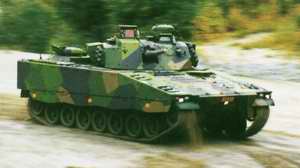 |
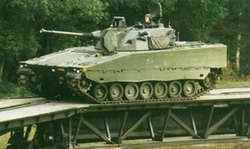 |
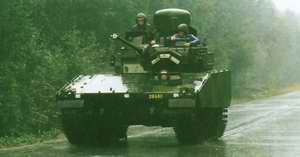 |
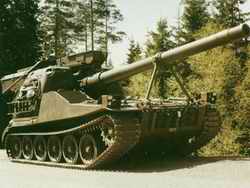 |
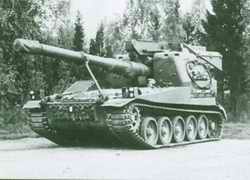 |
|
|||||||||||||||||||||||||||||||
Related Articles |
|
BAE Systems to deliver vehicle mounted mortar systems to Swedish Army (25.12.2016) |
|
BAE Awarded Contract to Refurbish CV90 Vehicles for Sweden (01.04.2016) |
|
BAE Delivers ARCHER Artillery System to Sweden (30.09.2015) |
|
Raytheon Excalibur demonstrates unparalleled precision in live-fire testing from PzH2000 self-propelled howitzer (11.12.2013) |
|
FMV receives delivery of the first Archer pieces (25.09.2013) |
|
SAAB Receives Order For Artillery Ammunition (30.07.2013) |
|
Australian Forces to Receive Improved Firepower with Saab's Carl Gustaf Anti-armour Weapon (18.02.2010) |
|
First prototype of artillery system Archer (07.07.2009) |
|
BAE Systems Bofors signs a contract with Akers Krutbruk (05.06.2009) |
|
Raytheon Successfully Completes Extended-Range Test for Excalibur Block Ia-2 (30.11.2006) |
|
Successful Safety Testing of GPS-Guided Artillery Projectile (19.09.2006) |
|
BAE Systems Bofors Wins Artillery Order from Sweden (06.09.2006) |
|
New anti-armour weapon system for the Swedish Armed Forces (27.12.2005) |
|
Successful Flight Test of GPS-guided Artillery Projectile Puts Raytheon-Bofors Excalibur Closer to Fielding (28.09.2005) |
|
Tenix and Bofors Team up for ADF Artillery Upgrade (04.07.2005) |

